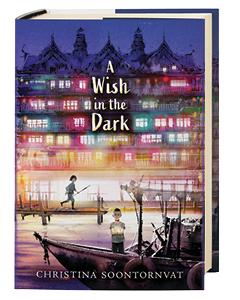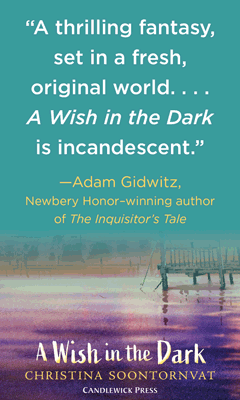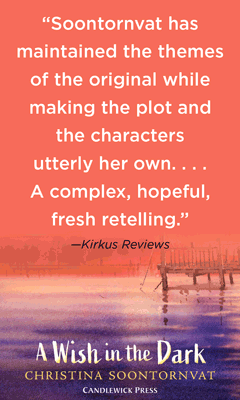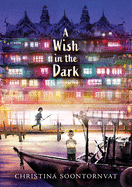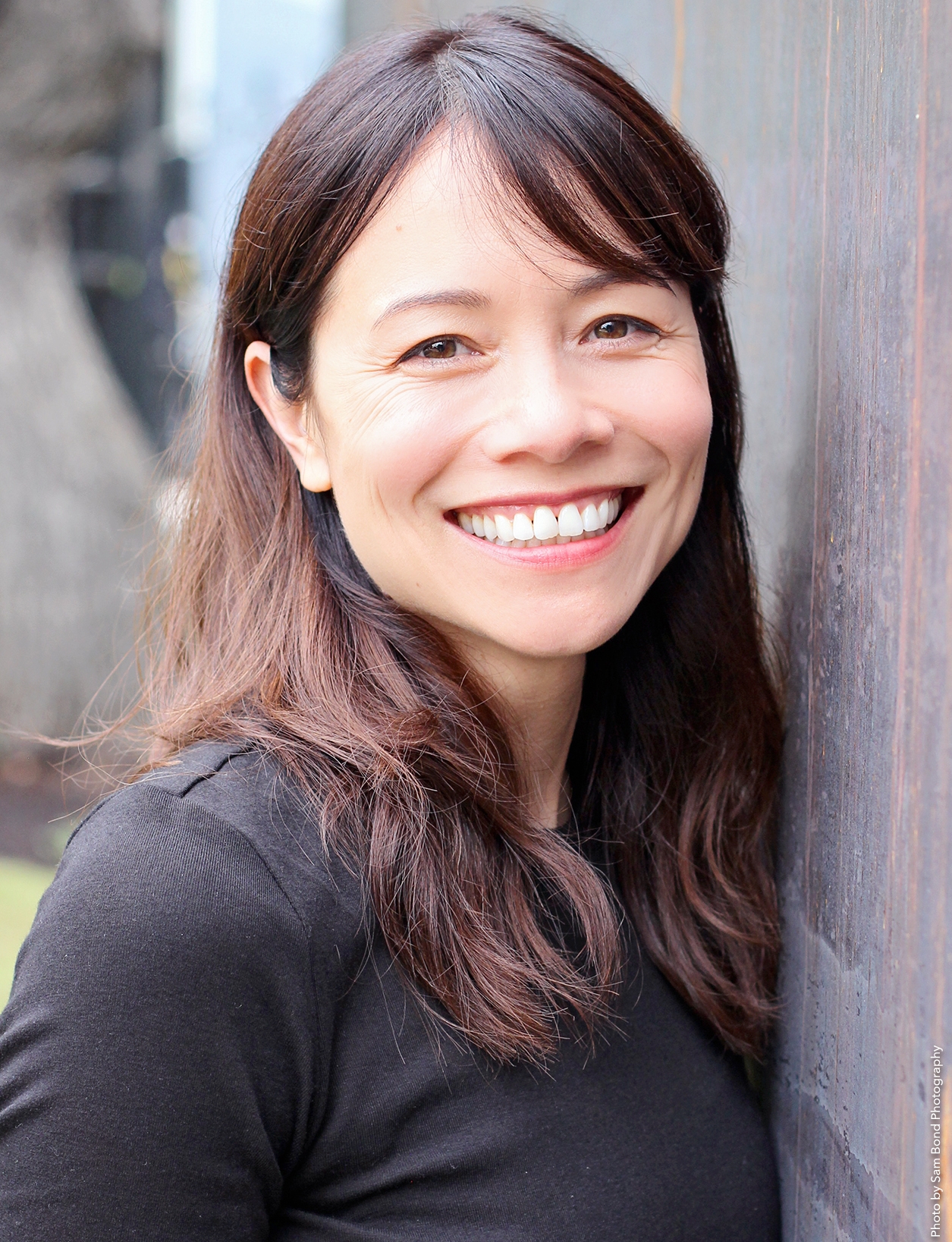A Wish in the Dark
by Christina Soontornvat
A boy born a prisoner and reborn to the world through compassion, a lion-hearted girl obsessed with reclaiming her family's honor, and an oppressed lower class ready to take a stand converge in a magical city of light in a Thai-inspired fantasy. In this tween-friendly variation on Victor Hugo's classic novel Les Misérables, Thai-American author Christina Soontornvat (Diary of an Ice Princess series) opens a gateway to a glorious world swirling with wishes and secrets under thousands of magical colored lights.
Once upon a time, the city of Chattana boasted such magical wonders as tree-tall giants, singing fish and floating markets selling "cakes frosted with good luck." The city grew, but "magic doesn't like a crowd" and "the wonders thinned away." Then catastrophe struck. In Chattana's present, magic underlies everyday life in much the same ubiquitous, nearly invisible manner as electricity, but access is tightly controlled. The glowing orbs Chattana's citizens use to light their homes, cook their food and power their machines come in a spectrum of color and strength, with the cheaper Violet and Blue suitable only for producing dim light, and the most expensive, Jade and Gold, capable of running heavy machinery and producing the purest, brightest light. The color of light has become a symbol of not only wealth and status, but of worth and righteousness.
The law requires nine-year-old orphan Pong, born to a prisoner at Namwon Women's Reform Center upriver from Chattana, to remain incarcerated until he turns 13. He secretly dreams of working for the Governor, Chattana's savior and ruler, whose magic is the sole power source of every orb in the city. When the Governor comes to inspect the prison, though, a misunderstanding on the part of the warden's daughter, Nok, dashes Pong's dreams. "Light shines only on the worthy," the Governor scolds, adding that no worth lies in anyone "born in darkness." Crushed by the epiphany that a thief's son has no future in the City of Rules, Pong instinctively seizes a breathtaking escape opportunity. In the outside world, Pong is a fugitive and the Namwon tattoo on his wrist will proclaim his escapee status to any who see it. If caught, he will return to prison for life. Alone and starving, Pong stumbles upon a rural temple and meets Father Cham, a wry, wise soul with mysterious powers whose boundless compassion changes the course of Pong's life.
Four years later, 13-year-old Nok Sivapan has a dilemma. She has long guessed that she is her father's biological child but not her mother's. Now society has begun to whisper about her birth, and her mother wants her sent away to quell the scandal. Nok has always worked to make her parents proud, winning Chattana's citywide spire-fighting championship and staying at the head of her class in school. Now she plans to change the gossips' tune with an impressive feat--but first she has to come up with one. Visiting a remote village with her parents, Nok recognizes a young monk as the boy whose escape caused her father to lose his position as warden at Namwon. If she can bring this fugitive to justice, surely no one will question her worth as a daughter. Her relentless pursuit will drive Pong into Chattana's aching, impoverished heart, where rumblings of discontent and protest are stirring, even as it drives Nok herself into the dark truth of her own origin.
While building a children's story on the scaffolding of Les Misérables may sound perilously ambitious, Soontornvat demonstrates an innate sense of how to distill a masterwork down to its timeless essentials and remix them with kid-friendly elements. By loosely preserving Hugo's central trinity of the runaway prisoner who turns to good works, the self-righteous agent of justice who believes people cannot change, and the holy man who understands that only compassion saves souls, she builds depth and maturity into this thrilling adventure. In this fascinating, alternate Thailand, where an attentive person might hear the ripeness of a mango and a skilled martial artist can funnel her own energy through her staff, sparks of magic and mystery illuminate a complex and flawed social structure. Pong and Nok both grow in their understanding of morality as a separate construct from law or societal norm, a concept middle-graders are likely beginning to explore in their own lives. Often traveling among the disenfranchised, the narrative encourages empathy and critical thinking by confronting timeless stereotypes about poverty children have potentially already heard. Soontornvat here offers a bridge to classic literature that asks its readers to imagine a better world. Limned by magic and imbued with social commentary, A Wish in the Dark casts a beguiling spell. --Jaclyn Fulwood



